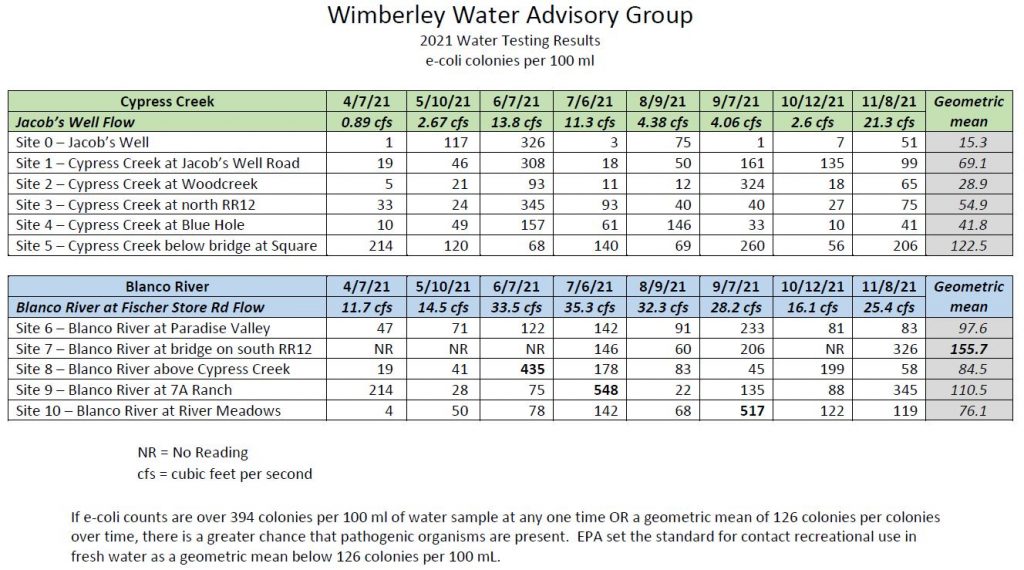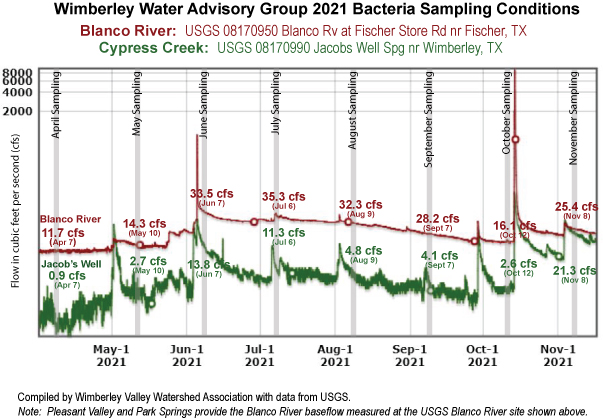Every year since 1984, volunteers with the Wimberley Water Advisory Group have sampled 10 sites on Cypress Creek and the Blanco River to monitor long-term bacteria trends. This program continues with support from the Wimberley Chamber of Commerce, the Watershed Association, the Wimberley Community Civic Club, and the Wimberley Lions Club. Special thanks to Pete Anderson for his years of dedication and service to this program and others that have supported this program over the last four decades.
The US Environmental Protection Agency uses e-coli bacteria counts as an indicator of how many pathogens could be in the water. If e-coli counts are over 394 colonies per 100 ml of water sample at any one time OR a geometric mean of 126 colonies per colonies over time, there is a greater chance that pathogenic organisms are present. EPA set the standard for contact recreational use in fresh water as a geometric mean below 126 colonies per 100 mL.
Three samples at sites on the Blanco River exceeded the 394 colonies per 100mL. And one site along the Blanco exceeded the geometric mean in 2021, however, with a limited number of samples at that site that were more frequently taken after significant storm events, the geometric mean may reflect runoff-influenced conditions rather than baseflow.
E-coli bacteria, or Escherichia coli, come from the digestive tract of warm blooded animals–commonly from fecal matter from human and animals. E-coli is used as an indicator of bacterial pollution which is often present when contamination exists from untreated sewage, manure, wildlife or pet waste and therefore serves to identify times when it is unsafe for contact recreation.
Properly disposing of pet waste, grazing livestock outside riparian areas, and storm water BMPs that help to retain sediment and organic matter in upland areas will help to reduce bacteria entering the creek during rain events. High E. coli levels at ambient condition and very low flows, can indicate a problem with malfunctioning septic systems near the creek or animal waste (pets, birds, bats and other wildlife) deposited directly into the stream.
Results are on file at the Chamber office and are published in the Wimberley View. Samples are analyzed at the Edwards Aquifer Research and Data Center Lab at Texas State University. More details can be found at the Bacteria Sampling page.

